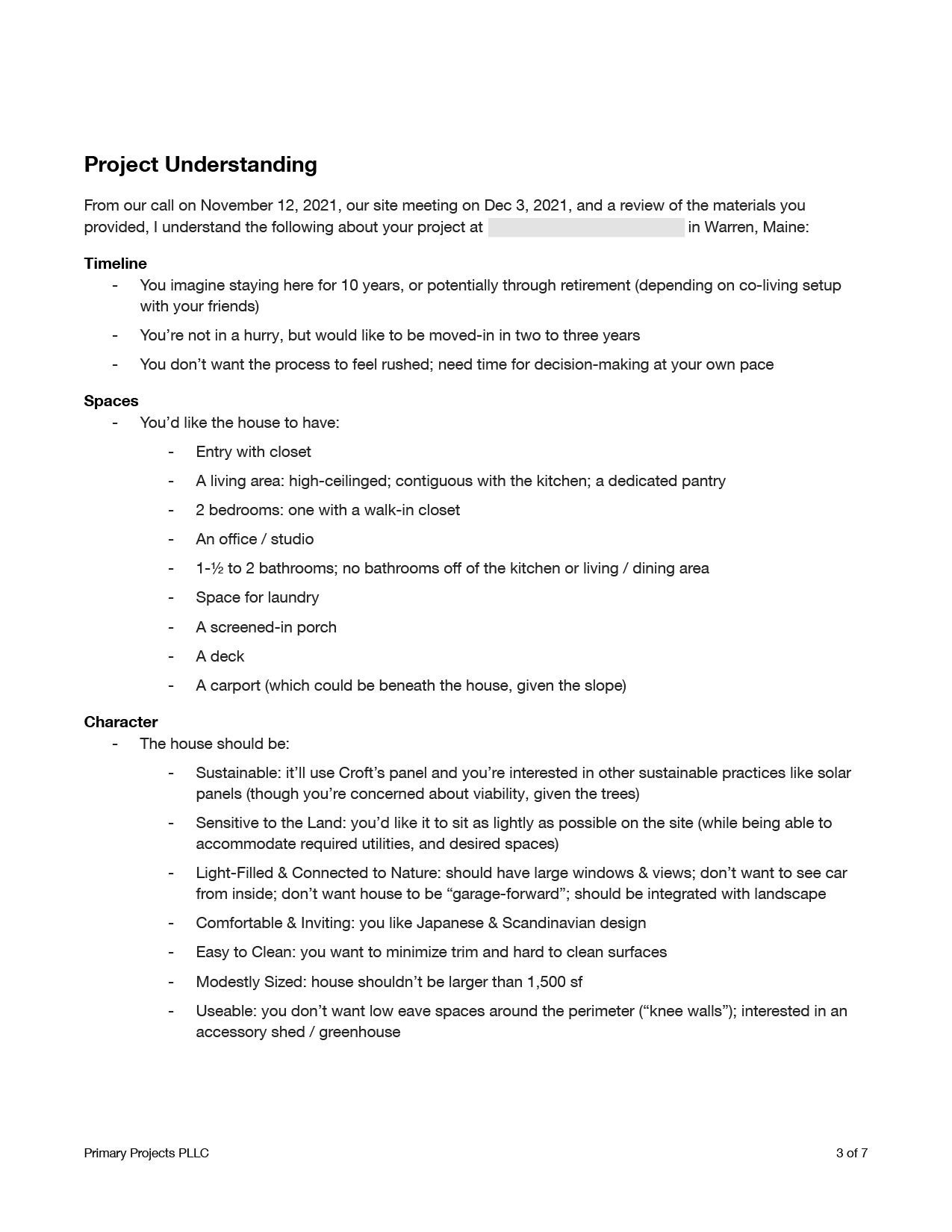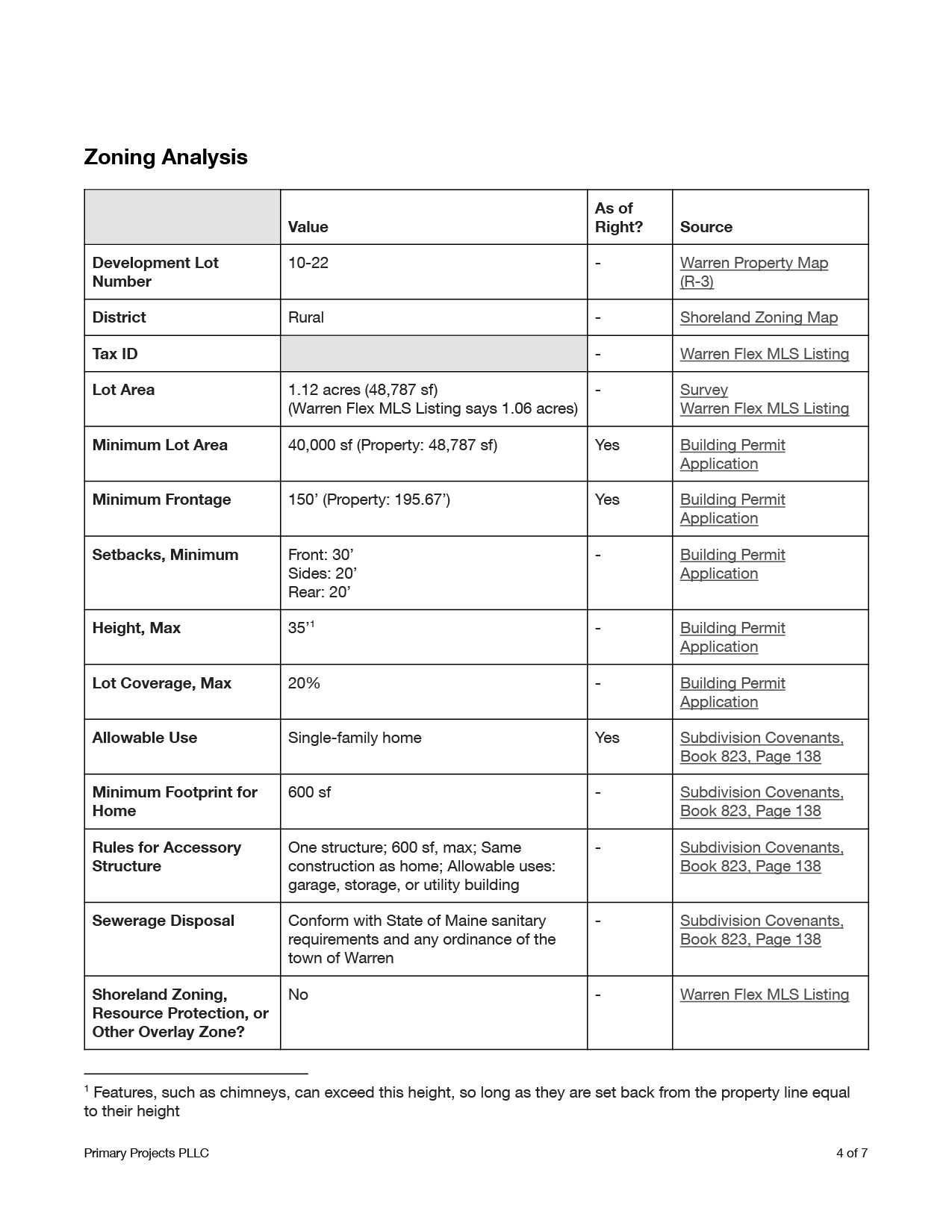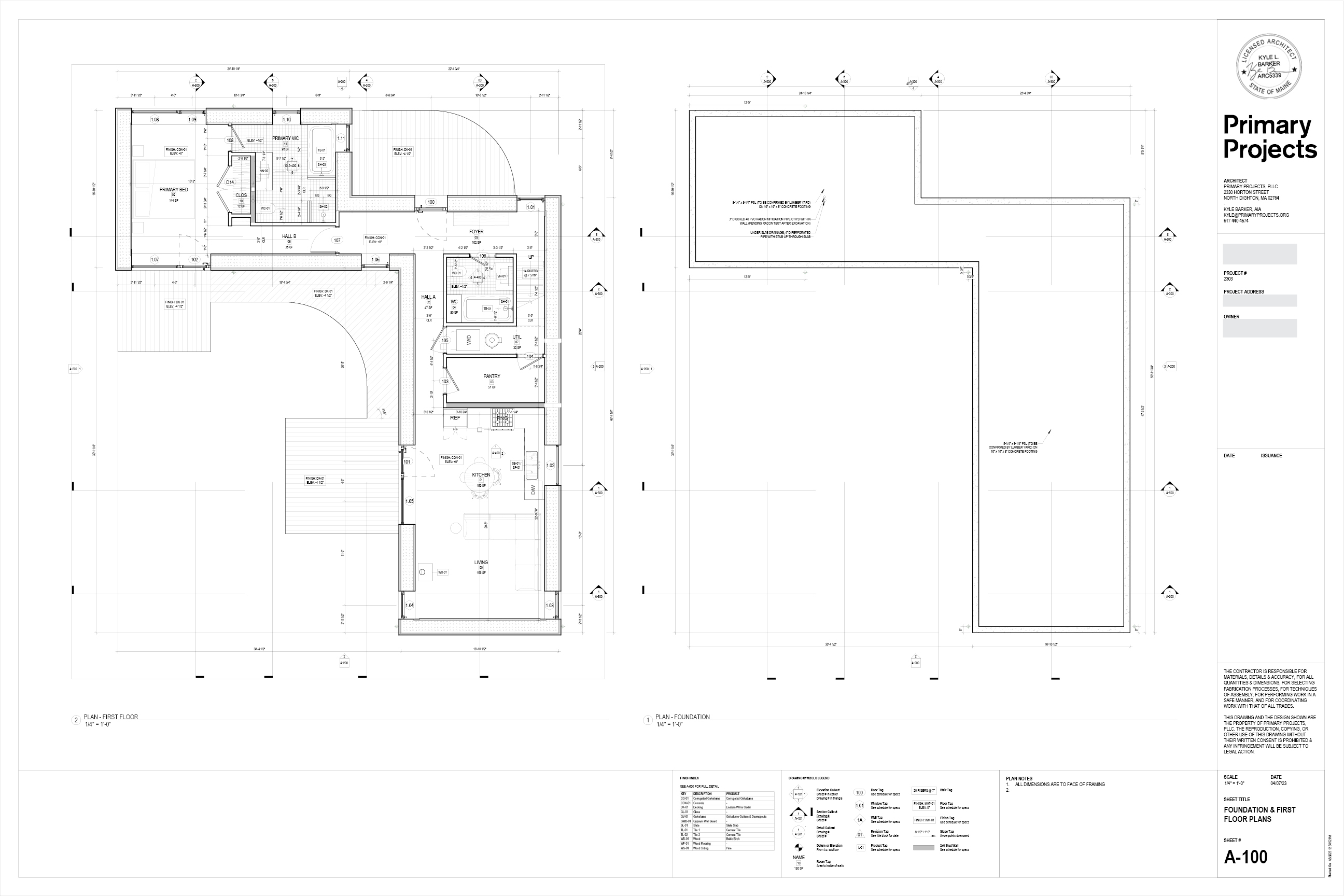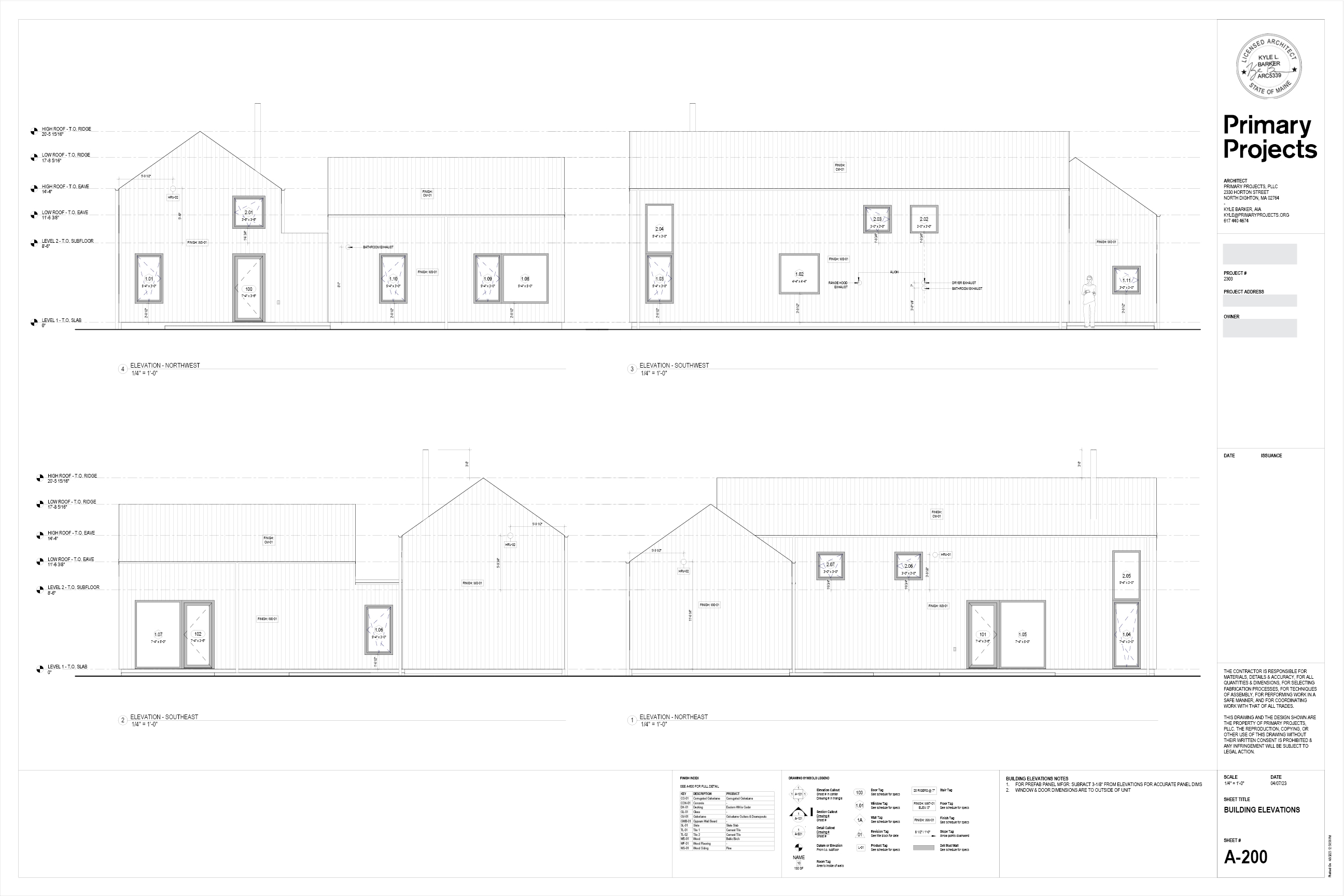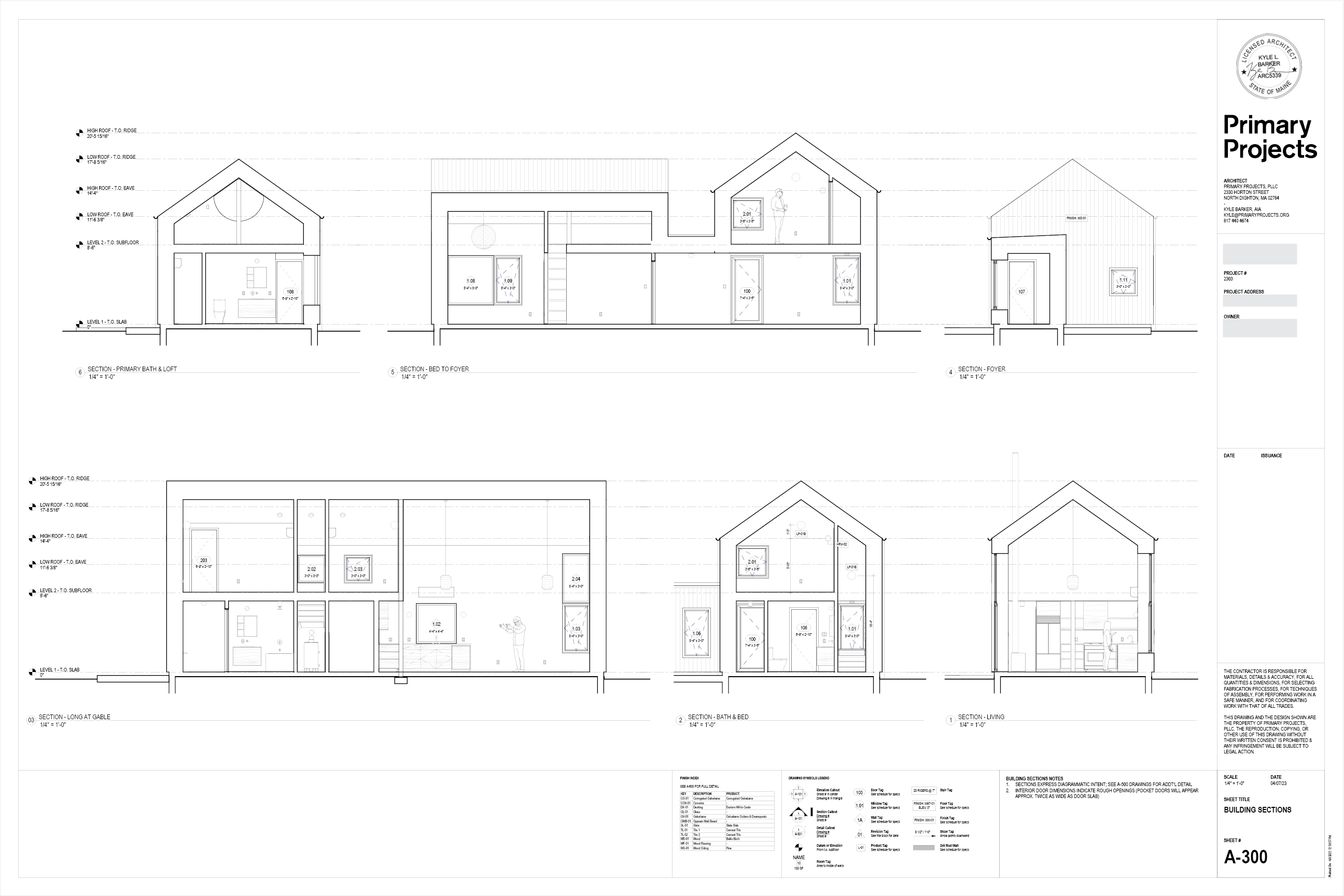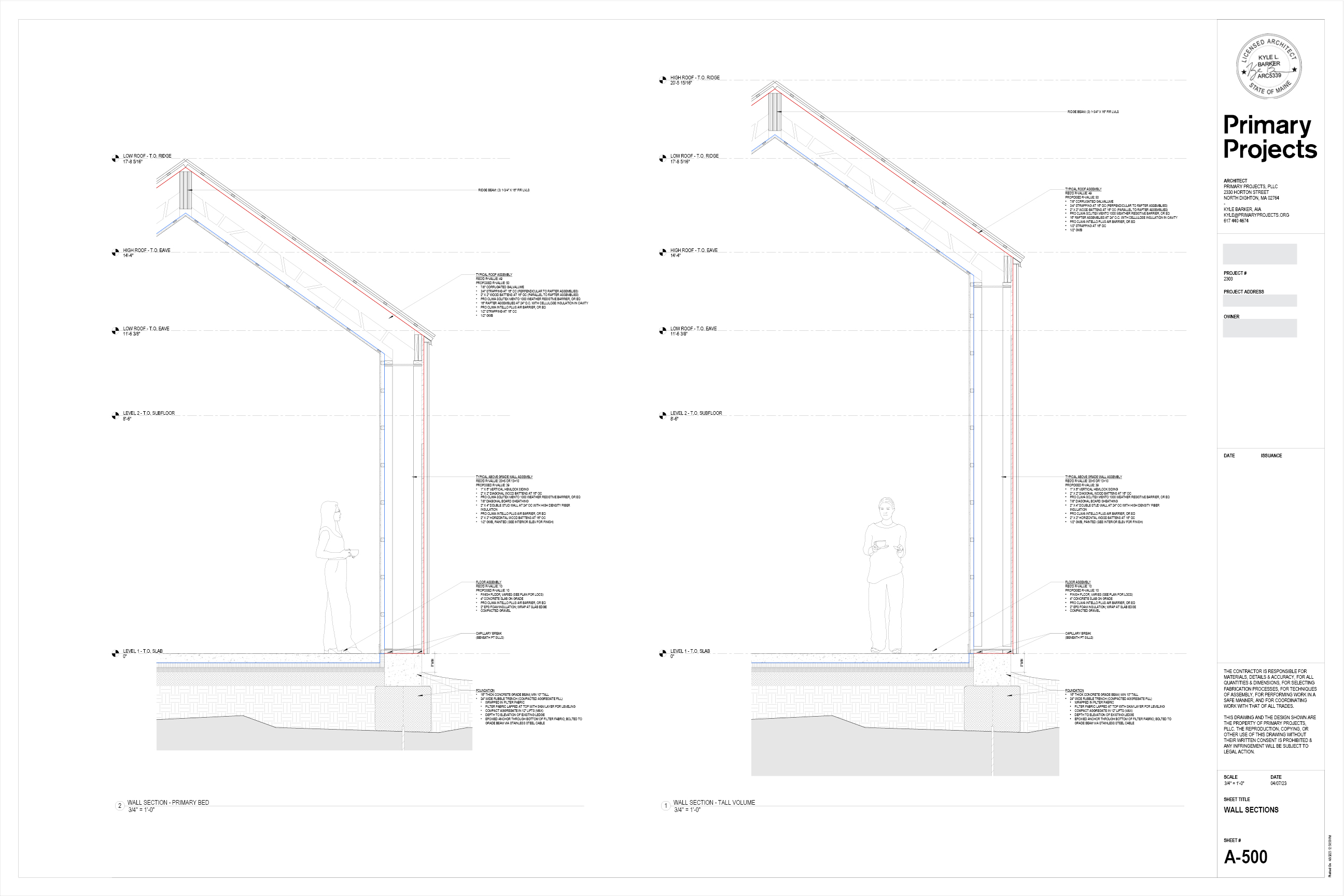We’re Primary Projects.
Pri·ma·ry (adjective):
of first importance; principal.
Design is about distilling a range of inputs—budget, site, taste, etc—into a single output. This involves countless decisions at every step of the way. We named ourselves “Primary Projects” to signal our commitment to helping you prioritize what matters.
We offer a range of services, from architecture and interior design to furniture selection. Sometimes, clients hire us for one thing; sometimes, we do it all. Our involvement depends on the project and your needs.
of first importance; principal.
Design is about distilling a range of inputs—budget, site, taste, etc—into a single output. This involves countless decisions at every step of the way. We named ourselves “Primary Projects” to signal our commitment to helping you prioritize what matters.
We offer a range of services, from architecture and interior design to furniture selection. Sometimes, clients hire us for one thing; sometimes, we do it all. Our involvement depends on the project and your needs.

We like sharing.
We have extensive experience designing for multi-generational families, co-ops, intentional communities, and the like. (We’ve also done research, lectured, and taught on these topics!)
Tracking the growth of the average American Home against growing storage & credit, and shrinking families, yards & savings. From Store House, our research project on sharing in the suburbs. ︎︎︎
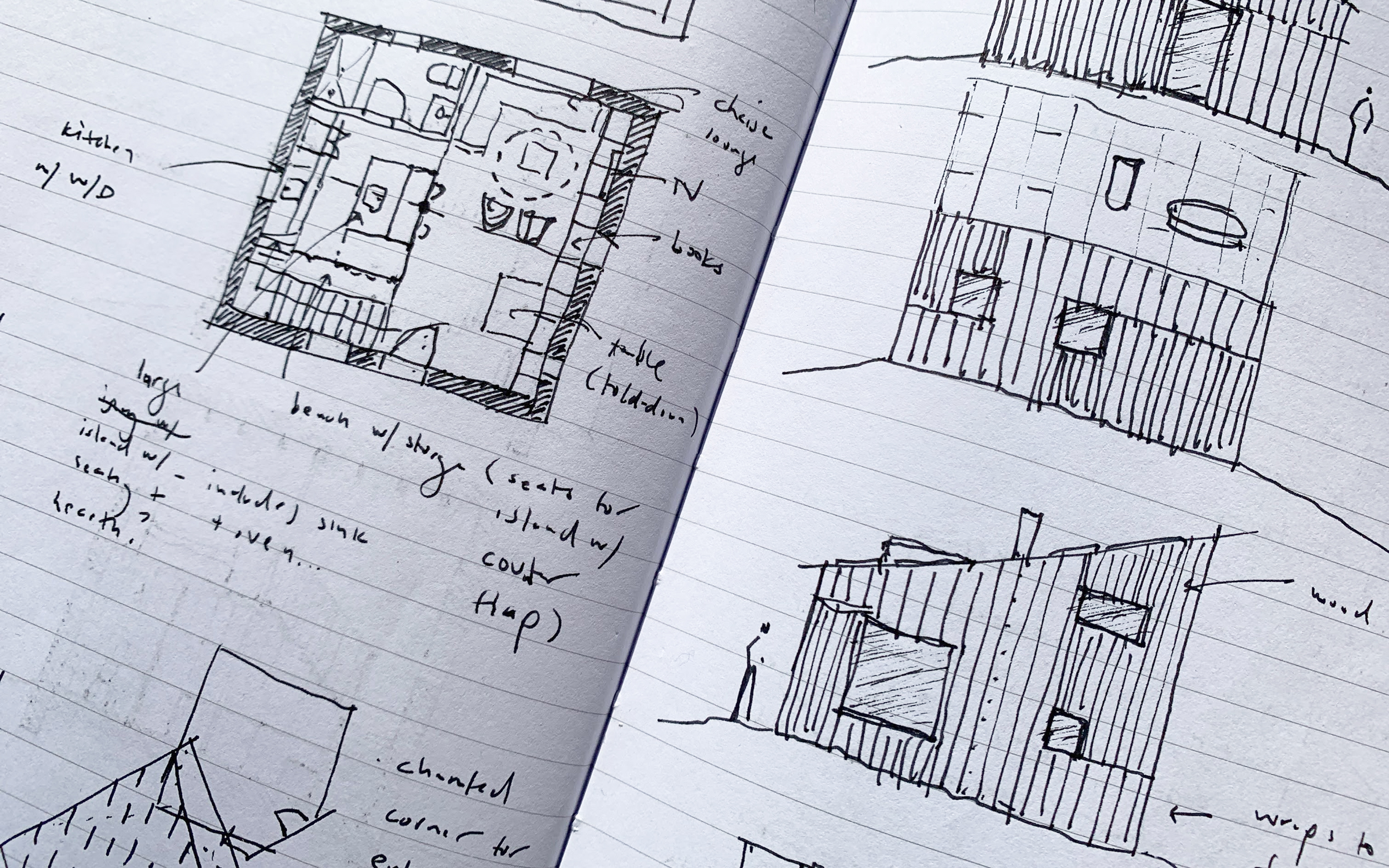
We’re allergic to jargon.
We’ll talk to you like that teacher you loved who made complex things sound simple. We spell out acronyms and we’ll never call a window an “aperture.”
Early sketches for a tiny house project in Maine. ︎︎︎
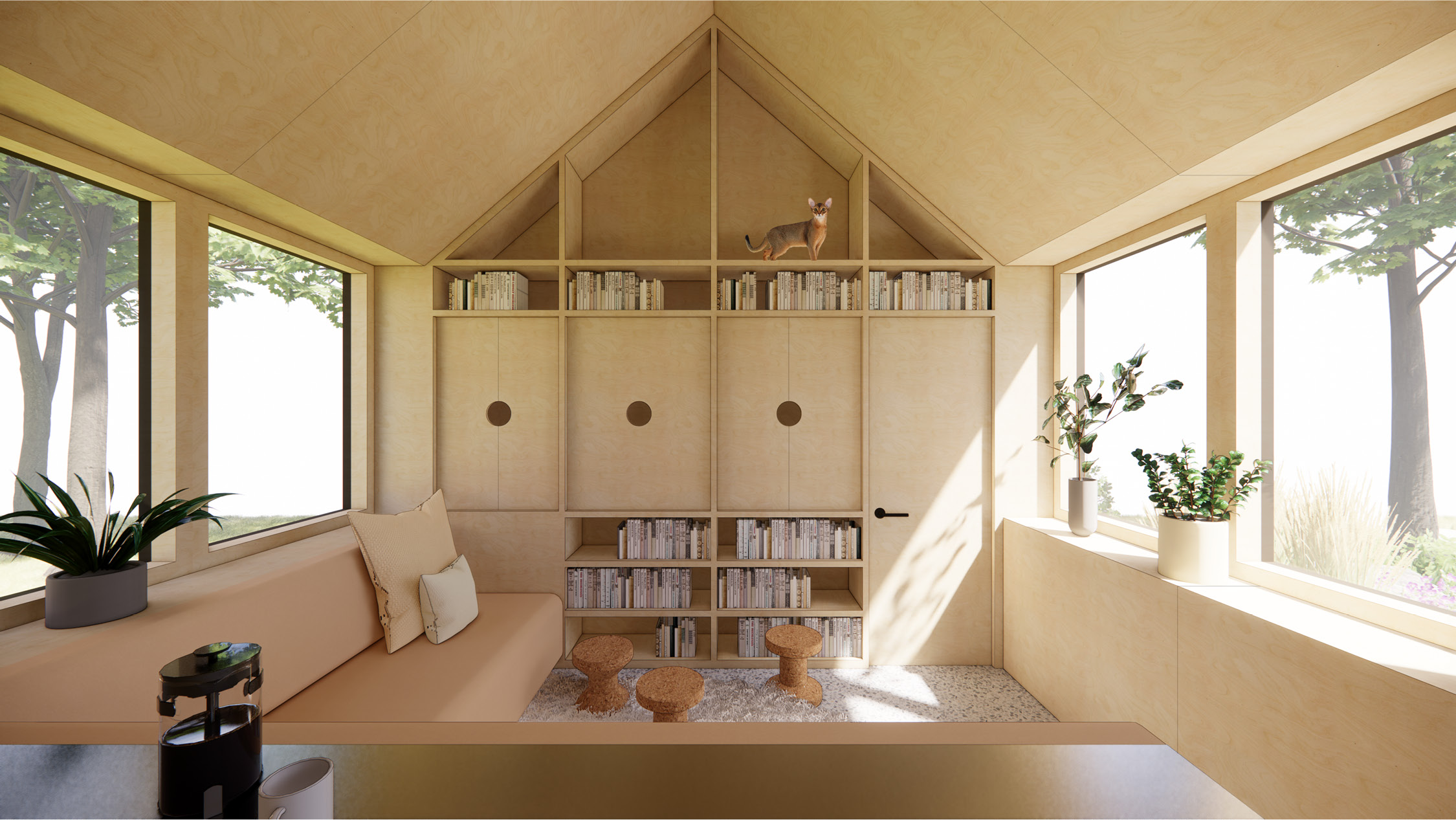
We’re environmental nerds.
We have experience designing to LEED, NetZero, & Energy Smart standards (including Passive-style Houses). Currently, we’re excited about the possibilities of straw as a carbon-sequestering building insulation.
The Straw House, a tiny house made using Croft’s pre-fabricated, carbon-sequestering, compressed-straw building panels.
We have an “off-the-shelf” mentality.
Sometimes a large, custom thing is worth it! But sometimes, a slight adjustment that allows for the use of a standard product saves money without sacrificing quality. This value-conscious ethos permeates our decision making.
At the House with a Curved Stair, we reused a large window the owner found on site to open up a new view to the lake. ︎︎︎
The Primary Process
Architecture is complex. We’re continuously refining our process to make things as simple as we can. There’s a lot here, but you can get the gist of it from focusing on the large text.
Step 1: Design Report
The first step is to research your property. The Design Report provides a solid foundation for
everything to come.After visiting your property and meeting with you, we’ll produce a report that includes:
- A summary of your goals, timeline, and budget
- A review of the local zoning regulations
- An analysis of the permitting process
- A subjective comp analysis (for single-family home work)
- Guidance on next steps
The purpose of this exercise is to:
- Align on intent
- Avoid regulatory surprises
- Provide a window into our process (you can
take this report to another Architect; it’s something you’ll need regardless)
- Outline next steps
Most firms don’t do this. We’re not sure why! From our experience, the Design Report is a great tool for aligning on intent and avoiding unwanted surprises. (For example, we could discover that 70% of your site is “off limits” because of a wetland buffer zone. As you can imagine, it’s better to find that out at the beginning!)
Step 2: Concept Design
We take your budget seriously! To scale the project to the budget, we start with a low-cost concept phase. During this, we’ll work with you to create one or more preliminary designs for your project. We’ll share these with a general contractor (GC) to get their feedback on cost.We strongly recommend involving a GC from the outset of the project because they provide the following benefits:
- Help monitor costs (important with recent market volatility)
- Advise on constructibility (i.e. cost savings)
- Reserve a spot for you in their schedule
- Give you a good price (because we’re a referral source for them / we work with honorable people)
- File required permits

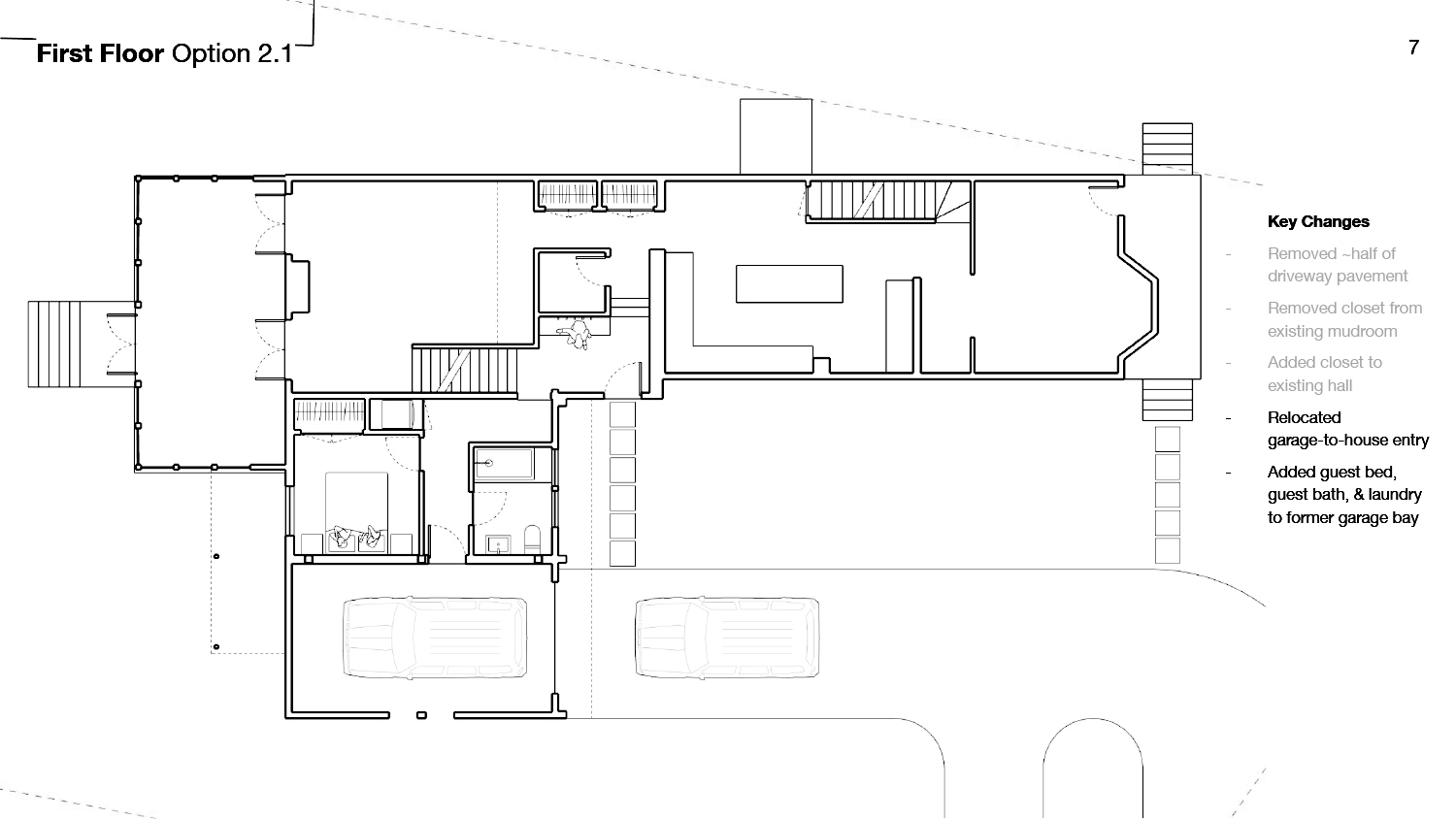
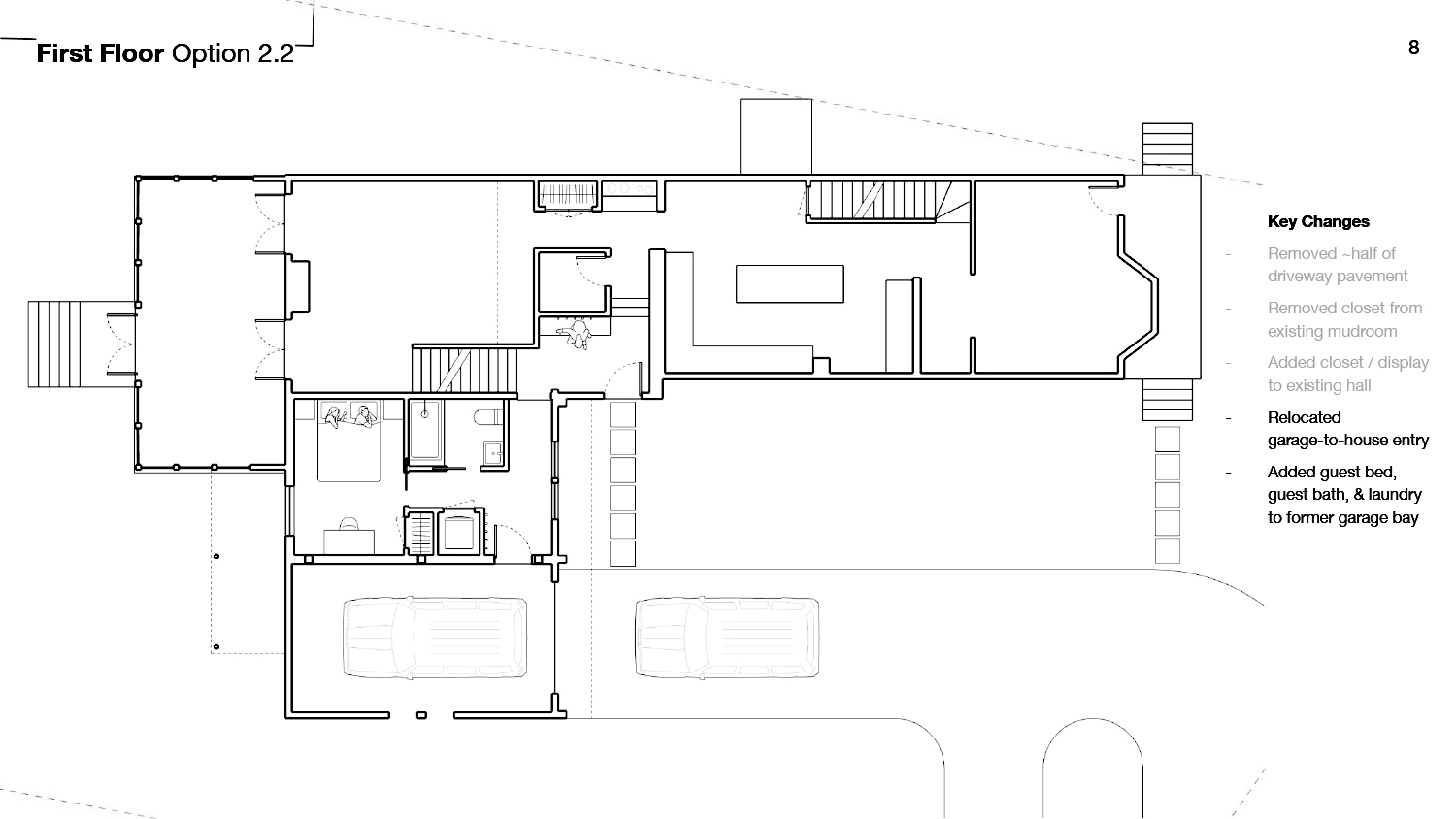
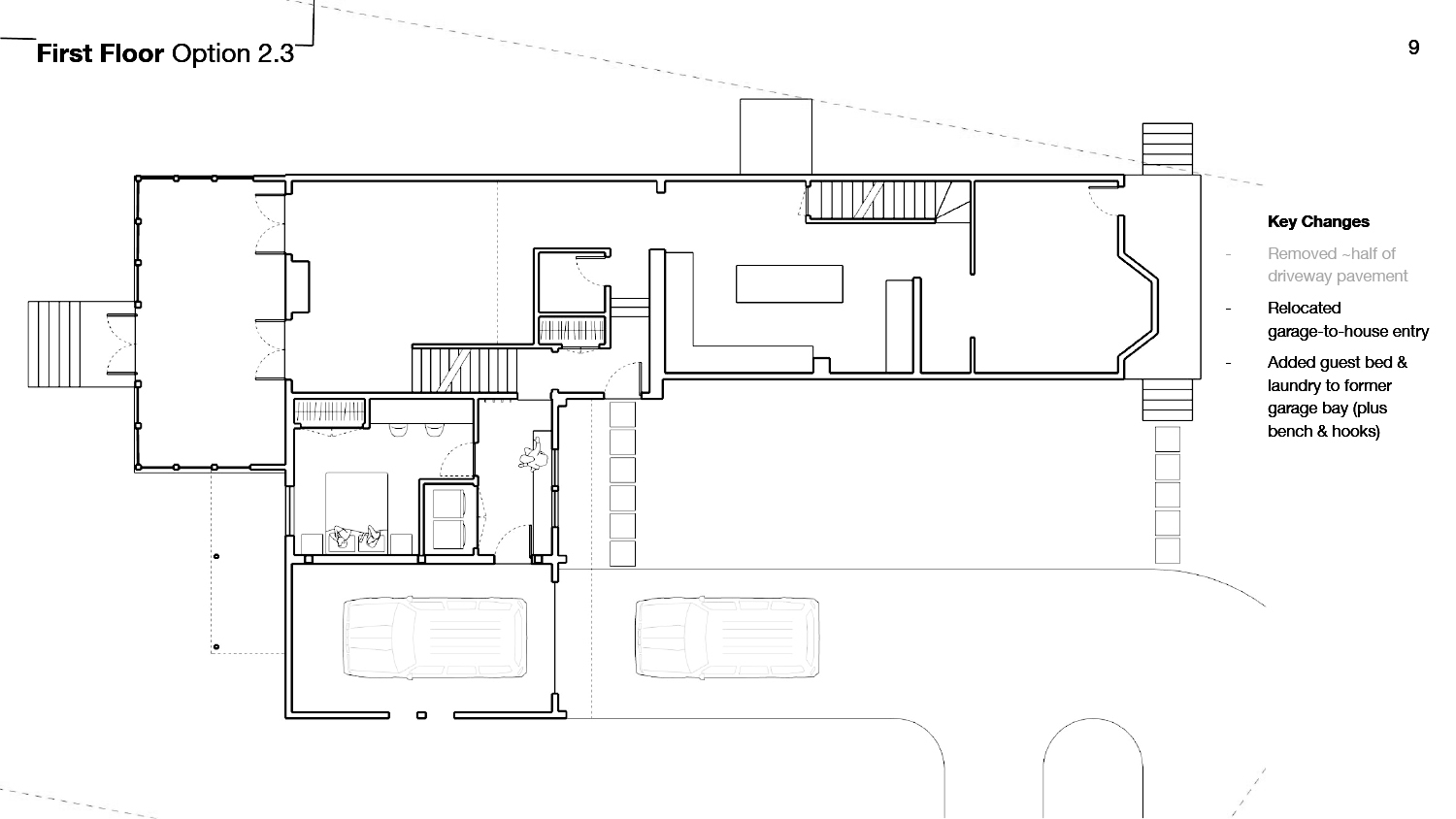
Early plan studies for a home addition in Massachusetts helped the owner clarify their priorities: the project shifted from a guest suite to a family-sized kitchen after these
Step 3: Schematic Design
Now that we collectively understand the regulatory requirements and the project scope we have everything we need to design the project together!
The purpose of this phase is to test options and make key, “big-picture” decisions. What to expect:
- Sweeping Change: The project can change dramatically from meeting to meeting as we better understand your wants, needs, and preferences
- Pinterest: We’ll share a private Pinterest board with you. This helps us get to know your vibe
- Drawings: Nothing helps draw out preferences like specificity. We use plans and sections (like a cut through a dollhouse) to help clients understand tradeoffs between design options
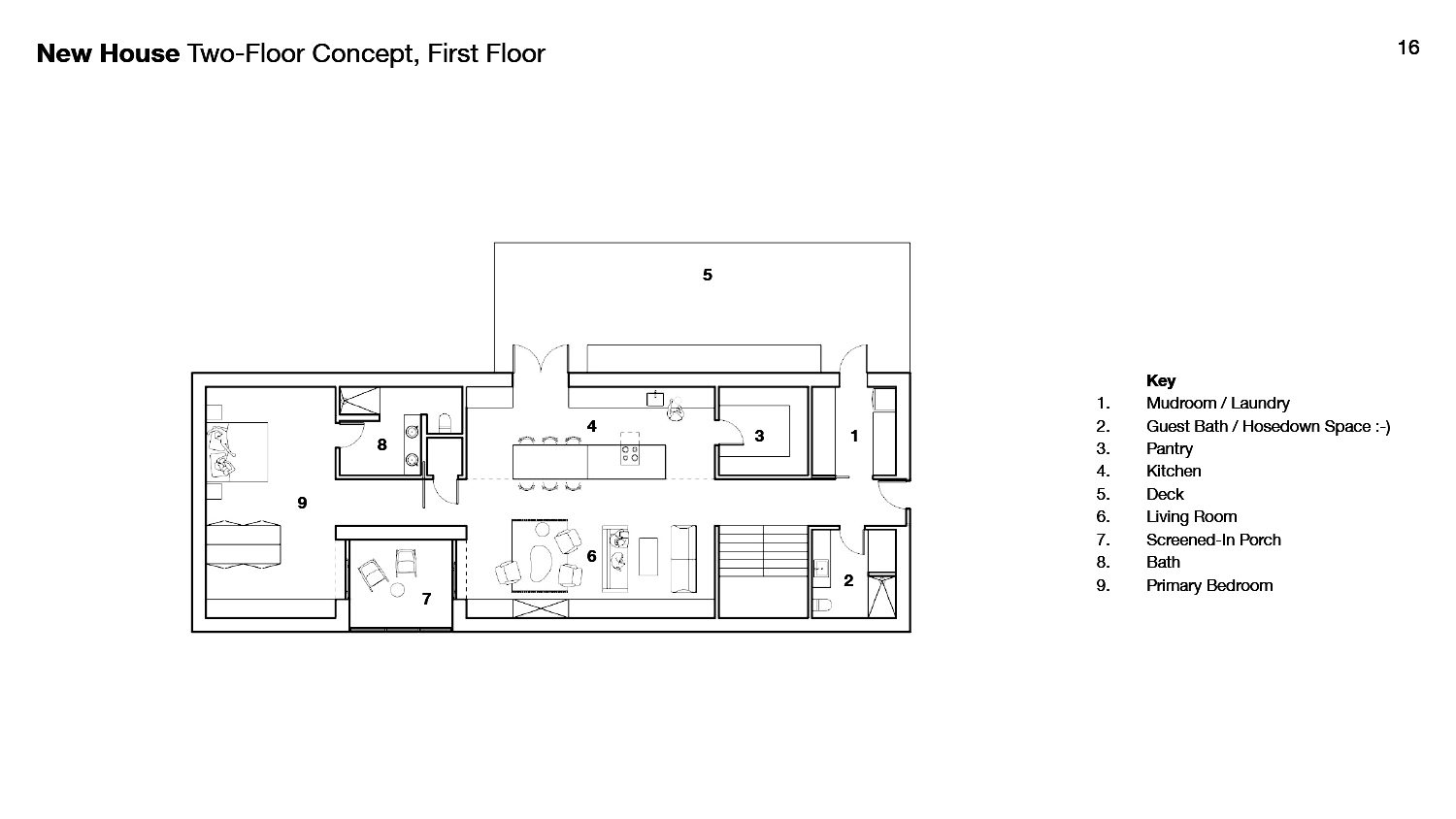
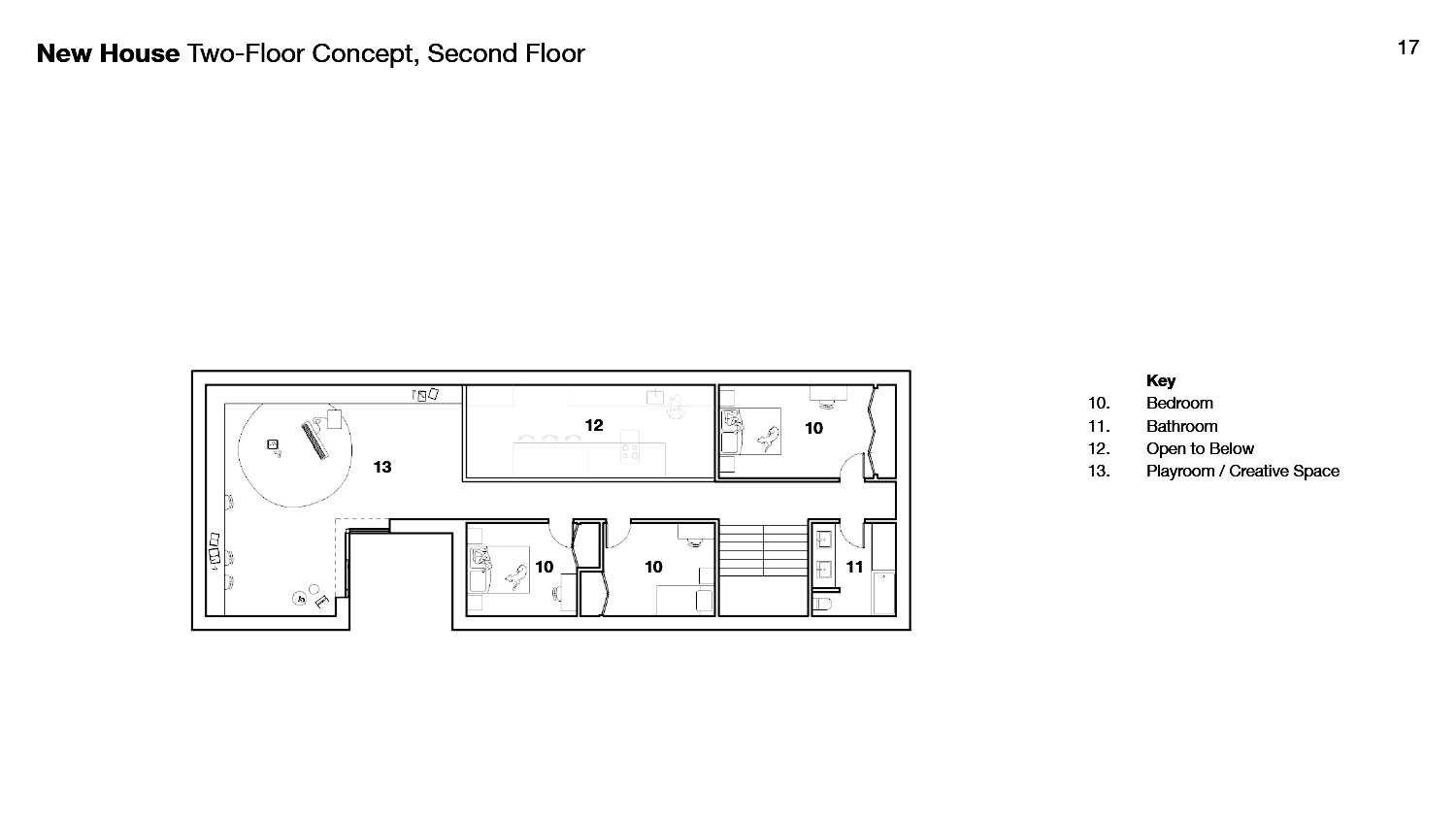
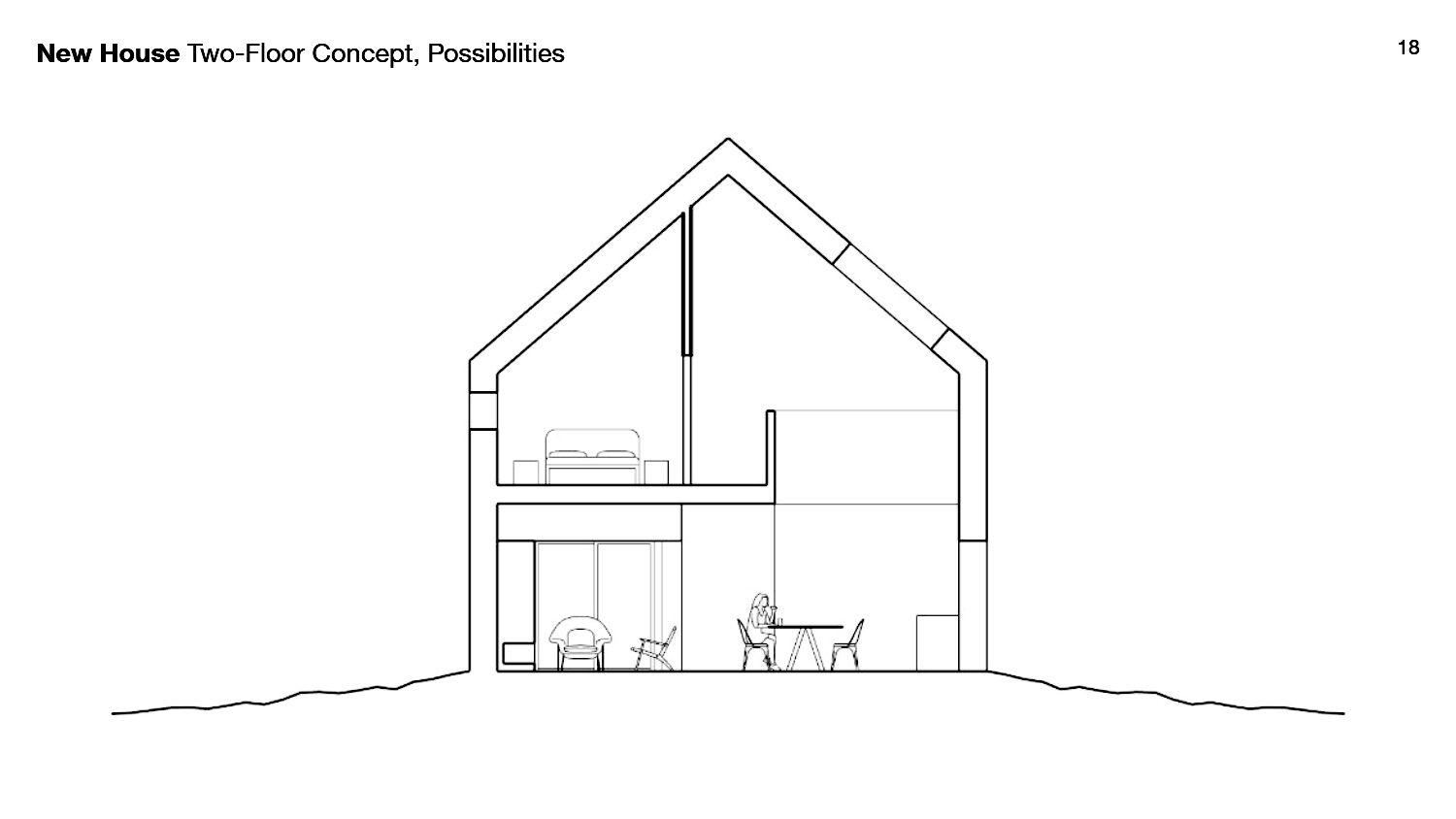

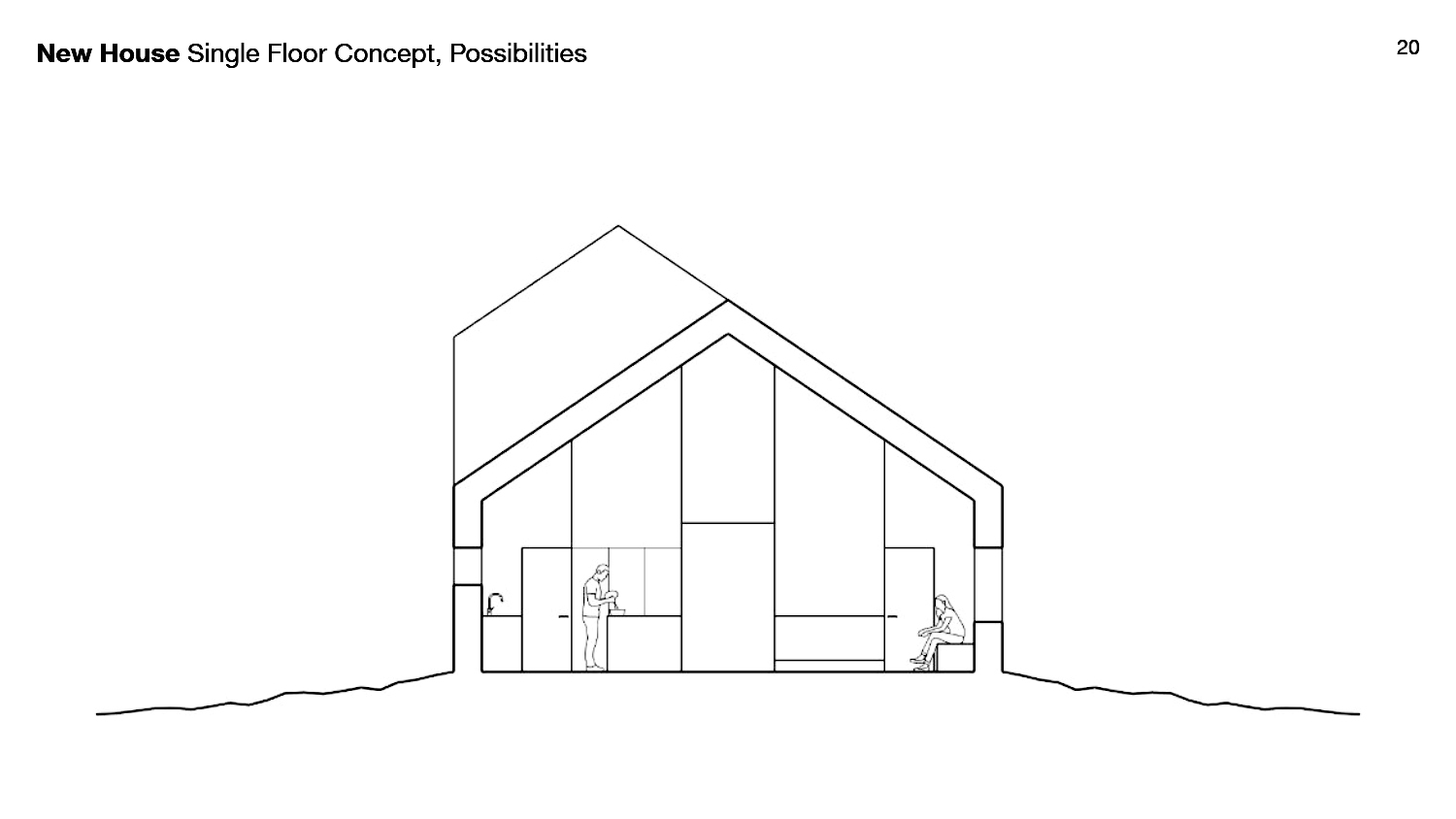
Two concepts—single-story & two-story—to help the client understand how the living & bedroom spaces would relate to one another
Step 4: Design Development
With the major decisions out of the way, we’ll zoom in and begin to develop the specifics of the project.
We’ll make recommendations, and adapt the design based on your feedback.What to expect:
- Refinement: The changes from meeting to meeting will be subtler
- The Fun Stuff: This is the first time you’ll see finish samples, light & plumbing fixture proposals, and the like
- Engineers: On most projects consulting engineers will join the team to advise on technical aspects of the design—structural connections to resist uplift, ductwork layouts, required amperage, etc. You are welcome to participate in our coordination meetings with them, but most clients ask us to take the reigns
- Renderings: Most architects charge extra for simulated views (aka “renderings”); we don’t, because they’re instrumental in helping clients visualize

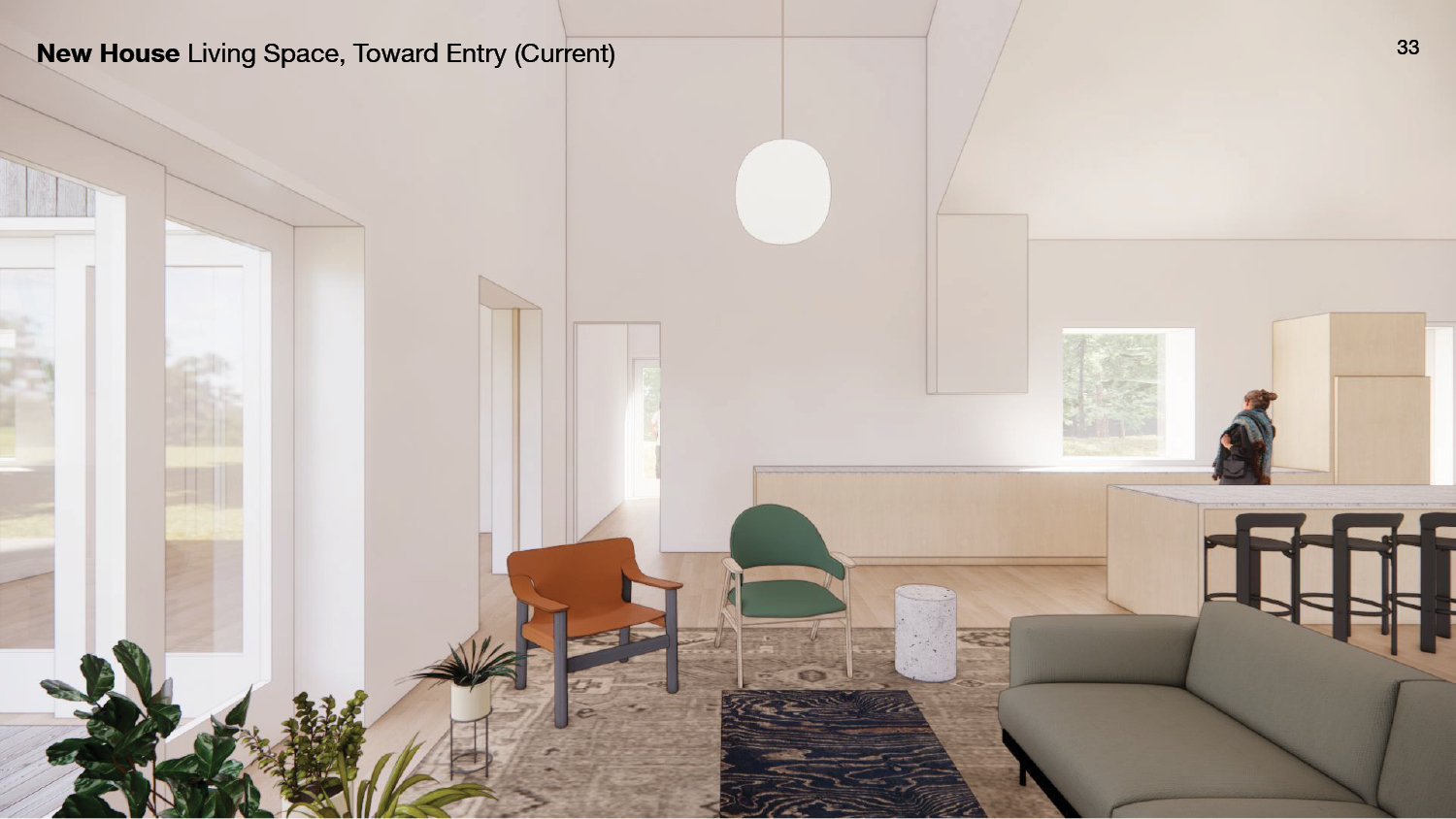


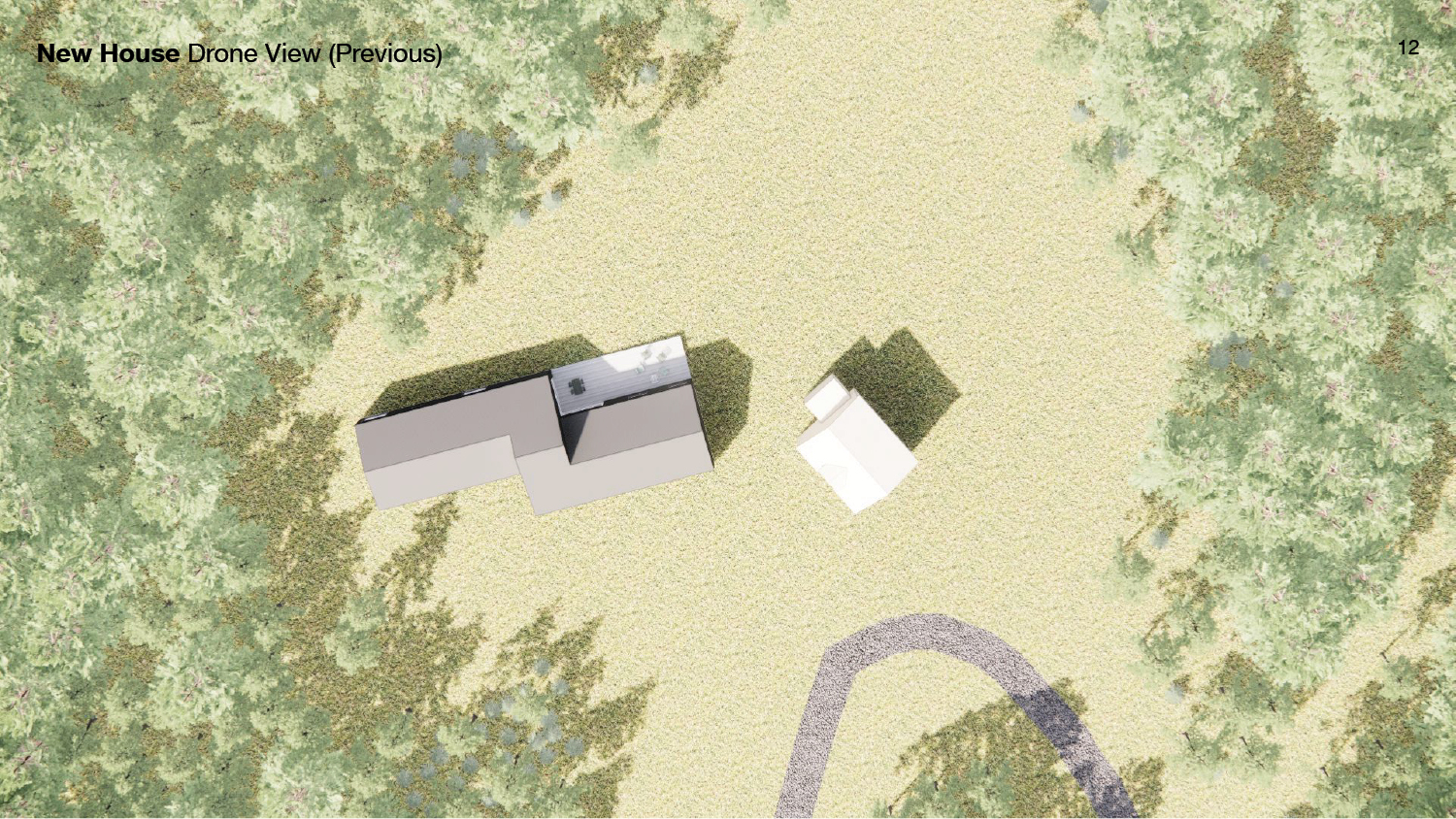
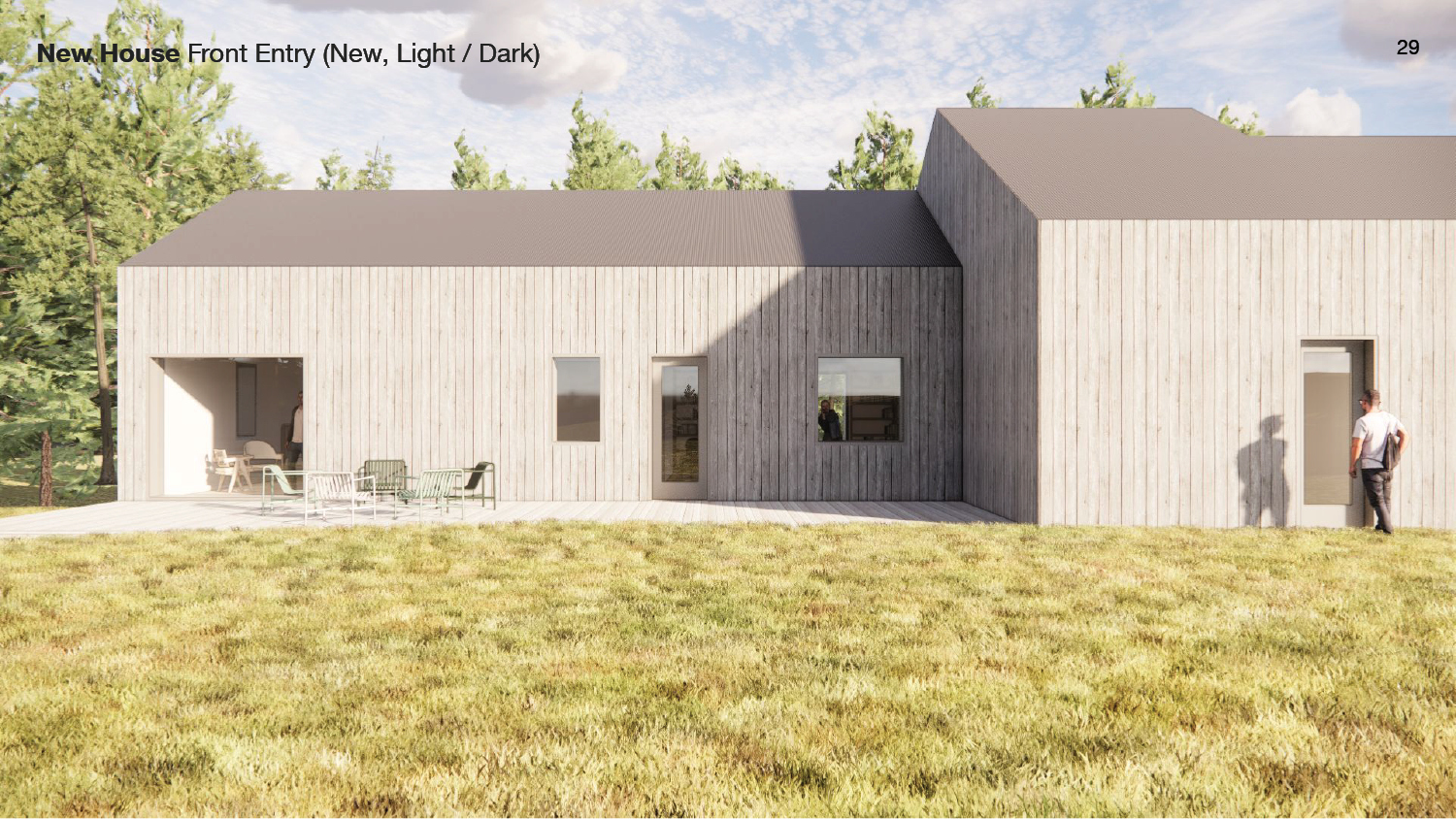
Renderings of a few key spaces & light fixture proposals
Step 5: Construction Documentation
At this point, we’ll shift gears and document the project for permitting & construction.What to expect:
- Relaxation: We’ll have fewer meetings at this point because you’ll have made the decisions, and we’ll need the time to document them properly
- Technical Drawings: These drawing are drawn for a professional audience: building inspectors & contractors. If you want to learn more, check out this post on Construction Documents
Step 6: Construction
Our clients typically work with the GC they met during the conceptual phase. After the permit has been granted by the municipality, construction begins!What to expect:
- Teamwork: We work hand in hand with the contractor during construction to ensure that the design is built in conformance with the drawings
- Visits: Frequency varies by project, but we visit at key milestones and to help problem-solve
- Advocacy: We serve as champions for quality, professionalism, and timeliness on the part of the GC

Construction is underway for the project from Step 4 above!
Primary Services
Primary Projects provides full architectural services, from concept design to construction documents, and construction administration. We’re at home working with large stakeholder groups and managing teams of consulting engineers & specialty consultants to achieve a common goal.
Looking for differentiators? We also do the following:
Looking for differentiators? We also do the following:
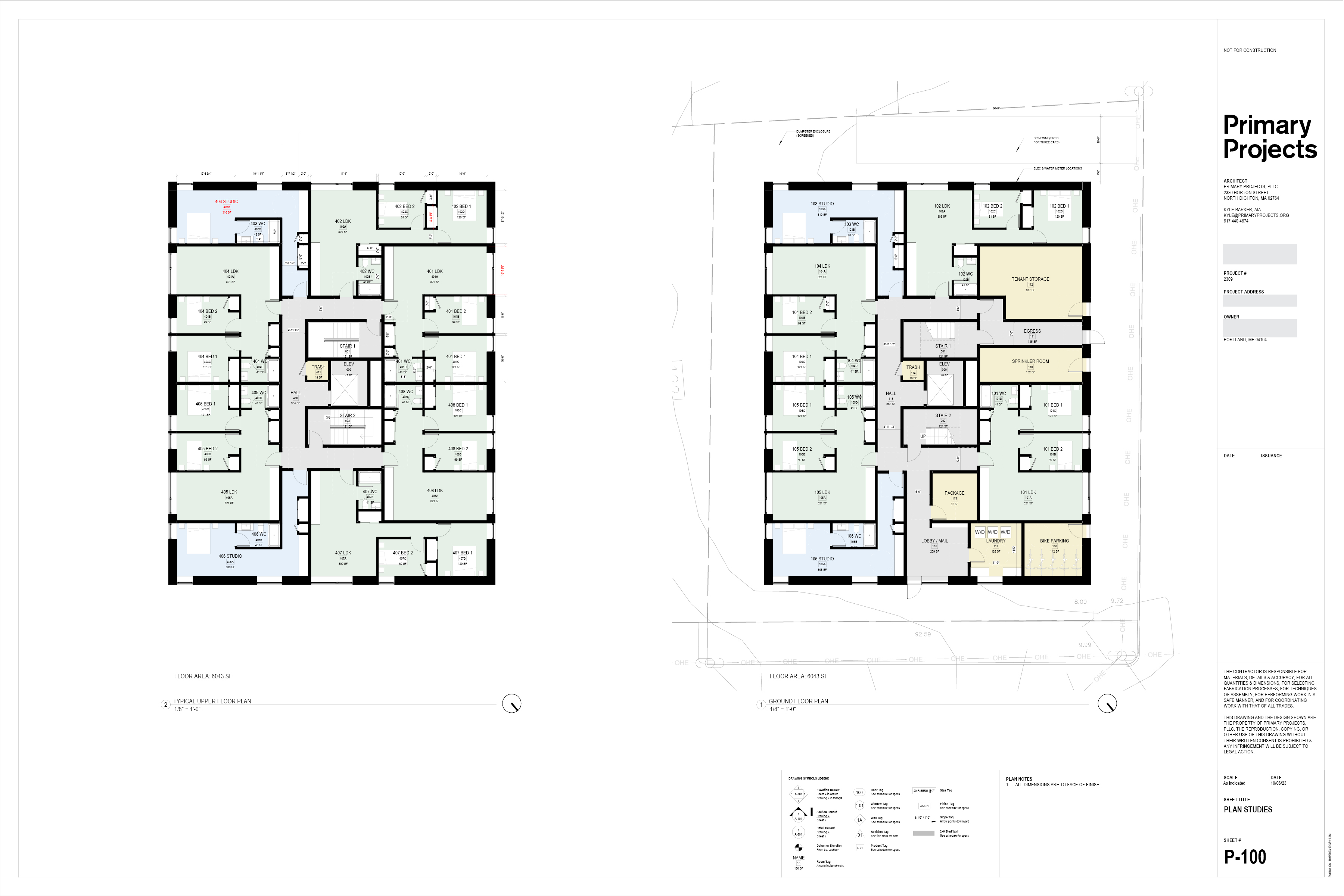
Feasibility Work
When needed, we help our clients determine a project’s viability by:
- Analyzing code, zoning, historical, accessibility, and affordability regulations
- Evaluating a site’s unique environmental factors
- Understanding the approvals process
- Testing design options
- Coordinating cost estimates
We help housing providers determine the viability of a potential site. This example incorporates strict affordability & accessibility rules from the state of Maine ︎︎︎
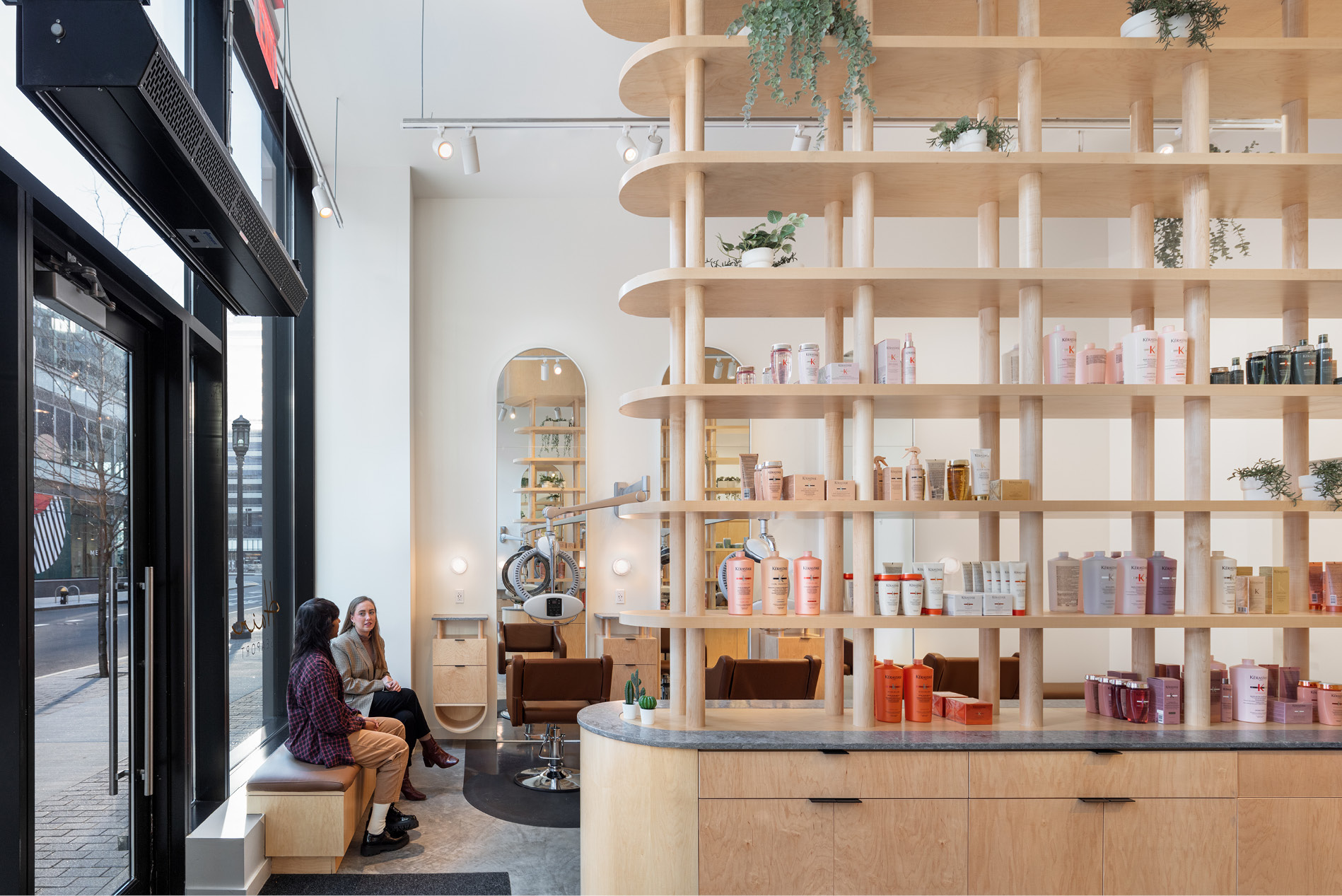
Interior Design
We provide full interior design services on most projects, helping clients with:
- Space planning & programming
- Finish selections
- Custom millwork
- Furniture, fixtures, and equipment (FF&E) specification
- Environmental signage & graphics
At Hair Seaport we did it all: space planning, finishes, furniture selection, and custom millwork ︎︎︎

Facilitation
We like people. Whether it’s providing our clients with visual assets to help them tell their story or stepping into a facilitation role with large client groups or at community meetings, we’re there!
Encouraging a large stakeholder group to share their spatial preferences through an activity ︎︎︎

Kyle Barker, AIA, NCARB
Founding Principal (he/him)Kyle formed Primary Projects in 2021 after over a decade working at three of the country’s top architecture firms. A drive to design inclusive, energy-smart housing fuels his work, research, and teaching. An eternal tinkerer, Kyle is always searching for better, simpler solutions to achieve his clients’ goals. He is passionate about design in its many forms and values clear communication above all. With extensive experience as a facilitator, Kyle strives to ask the questions that get clients the project they want. He also really loves hummingbirds and peanut butter.
Experience
Primary ProjectsFounding Principal, 2021-
Merge Architects
Senior Associate, 2016-2021
MASS Design Group
Associate, 2014-2016
Kennedy & Violich Architecture
Designer, 2008-2010
Education
Massachusetts Institute of TechnologySchool of Architecture + Planning
MArch
University of Cincinnati
College of Design, Architecture, Art & Planning
BSID
Registrations & Certifications
Registered Architect:Maine
Massachusetts
Michigan
New York
National Council of Architectural Registration Boards (NCARB), Certificate Holder & AXP Supervisor
Awards
Earl R. Flansburgh Young Designers Award, Boston Society for Architecture2023
Portland Society for Architecture’s Complete City: Filled In Competition Grand Prize
2021
Rotch Travelling Scholarship
Winner, 2021
Runner-Up, 2020
Finalist, 2017
Alpha Rho Chi Medal, MIT
2014
Rosemary D. Grimshaw Thesis Prep Award, MIT
2013
ZGF Norm Zimmer Scholarship
2013
Louis C. Rosenberg Travel Fellowship, MIT
2013
Merit-Based Fellowship, MIT
Full Merit Award, 2013Full Merit Award, 2012
Full Merit Award, 2011
Outstanding Graduate, University of Cincinnati
2008
Gensler Donald Brinkmann Scholarship
2006
Appointments / Memberships
The Cohousing Association of the United States (“CohoUS”)Advisory Board Member
Boston Society for Architecture
Co-Chair of the Small Practices Network Knowledge Community
American Institute of Architects
Member
EntreArchitect
Architect Small Group Member
Teaching
Northeastern University Home Makeover Master’s Thesis Degree Project Studio
Northeastern University
Home Makeover Master’s Thesis Research Studio
Northeastern University
Urban Walk-Up Housing Studio
Boston Architectural College
Design Thinking Seminar
Massachusetts Institute of Technology
Pre-Orientation Workshop
Singapore University of Technology & Design
First Year Curriculum Development
Coffee Dates & More
Click here for coffee dates. ☕️️
Click here for Zoom chats. 🧑💻
Click here to see what we’re up to. 📸
Click here to see what we’re reading. 📖

We’ll take notes!

